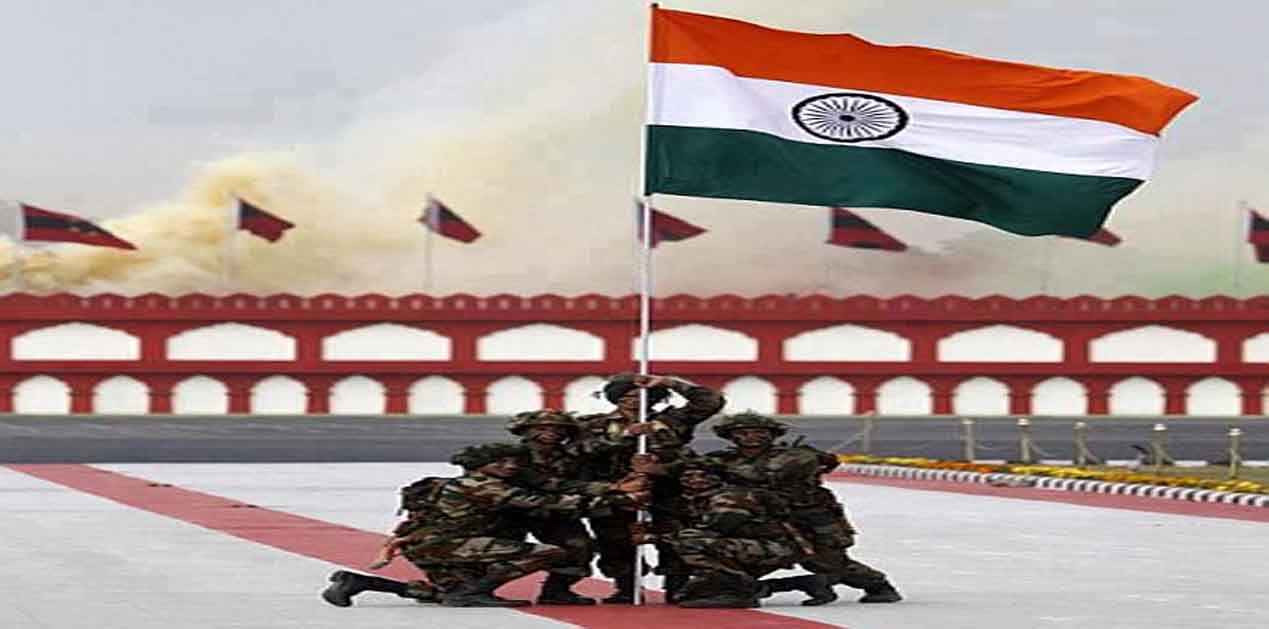A New Year brings hope but what follows may be 365 days of uncertainty in the complex world of international security. A combination of apriori-cum-empirical survey of challenges and opportunities would facilitate adopting the right approach to proactively manage the ambiguities ahead which is the central theme of this review.
The waves of disruption that marked the second decade of the 21st Century, commencing with the Arab Spring in 2011, may reach an apogee in 2019 given adjustments by major states to the disarray. The surprise or novelty factor that accompanies a disruptive act is likely to reduce as nations proactively adjust to protect their national interests.
Perceptively India has been early mover in adjusting to the geo-political and economic transformations indicated by the series of informal summits with China in Wuhan and Russia in Sochi in 2018 and related follow up events.
Continued adaptations will be the hallmark of international security in 2019 indicators which are already evident in the new ‘National Defense Program Guidelines’ (NDPG) and ‘Mid-Term Defense Program’ approved by Japan’s Diet five years ahead of schedule. European Union is contemplating autonomous defence capability which had hithertofore hinged on NATO alliance.
Rebalancing alignments to meet the challenges from the beat of, ‘uncertain drums’, from the United States, as reflected in the words of President Donald Trump – "The United States cannot continue to be the policeman of the world" - while visiting troops in Iraq, may dominate the international security environment in 2019.
Weakening of support to treaty allies and strategic partners by the United States will see transformation in defence and security alignments and architectures in the regional complexes of Indian interest – West Asia (Middle East), South and South-West Asia, the Indo-Pacific and North-East Asia.
The effect of recession of militarised internationalism by the United States will create major uncertainties. Whether this leads to positive stability or exacerbates existing structural instabilities in international security system, giving rise to hegemonic ambitions of other major powers to fill the vacuum left by America, remains to be seen.
The competition, nee conflict, between India’s major partners – United States and China, United States/Europe and Russia, United States/Saudi Arabia/Israel and Iran - is likely to become sharper and the narrative shriller in 2019. Big powers are likely to manage their relations to prevent a flash point, but a major disruptive event could be the outbreak of hostilities in the Persian Gulf or the slow burning conflict in Israel, Palestine, Syria or Lebanon. There are enough triggers to suggest that forces of both sides could be on the edge for prolonged periods which could snap peace. India’s energy security as well as military technology supply chains will then be seriously impacted, apart from the threat to large migrant population in the Gulf. Contingency plans for West Asia need priority with the hope that these options would never have to be exercised.
India will have to closely follow developments in nuclear and advanced missiles systems such as hypersonic cruise and super glide to be able to compete in this dimension in the future. A stronger China-Russia axis could be a response to the great power competition outlined above. A shift of the geo-strategic competition in the Indo-Pacific could in turn singe India in varied ways, some forms of which may manifest in 2019.
The security situation in Afghanistan may pose a proximate challenge to India derived more from artificially triggered political transitions through ill-timed negotiations with the Taliban and possible reduction of the US security presence in the country. The narrative of a Taliban, “victory” may have a snowballing impact with rapid unravelling of the security situation, including a fillip to presence of the Islamic State of Khorasan (ISK). India will have to be prepared to sustain support to the Afghan Government in multiple dimensions.
Pakistan’s political transition in 2018 has resulted in rise of immature and inexperienced Mr Imran Khan to power with the assistance of the Army. The extension of an olive branch accompanied by continued irascible and unacceptable comments on India’s internal issues is the irrational approach adopted which India will have to contend with in 2019. The Khan-Army nexus will pose major security challenges for India, be it on the Line of Control or in Kashmir. If there is a perception of success of the Afghan strategy of putting proxies as Taliban within reach of power in Kabul, internationally banned terrorist groups – Lashkar-e-Taiyyaba and Jaish-e-Mohammad - will demand an encore in Kashmir and the Pakistan leadership is not mature enough to resist the temptation. The growing China-Pakistan military collusive axis through a militarised China Pakistan Economic Corridor (CPEC) will also need close observation.
Competing with China’s diplomatic, political, economic and military expansion in South Asia, particularly India’s Himalayan neighbours – Nepal and Bhutan - is a concern as it is closely linked with the defence of the Northern borders. Given the Chinese People’s Liberation Army’s expanding military profile on the Tibetan Plateau, greater vigour in defence and military engagements with the Northern neighbour is called for.
A post-elections Bangladesh is expected to sustain positive relations with India which need to be taken forward to enhance land and sea transit corridors, thus expanding connectivity with the North-East to reduce India’s strategic cul de sac. The Rohingya refugee bulge in Bangladesh is set to continue at least in the medium term and joint strategies to contain adverse security dimensions of the same, in tandem with Myanmar, have to be called for.
The Indo-Pacific is likely to see intensifying flux due to the uncertainties of US commitment and rising Chinese naval presence. India’s key strategic partners are reviewing their stance and are likely to hedge against declining US presence in the region. India needs to continue attempts to build a cooperative security architecture based on soft military diplomacy of Indian Ocean Naval symposium (IONS) complemented by multilateral exercises such as the MILEX-2018 held by the militaries of BIMSTEC members.
Further eastwards in North-East Asia, Japan’s NDPG and force modernisation plans should be welcomed as it will creates a favourable military balance in the Indo-Pacific in the wake of a future American pullback from the region.
Another positive is the growing military technical cooperation between India and South Korea while continued uncertainty of North Korea’s denuclearisation can be anticipated.
In terms of the fuzzy domains of security, cyber, information and media - what is being referred to as Grey Zone Warfare - India remains vulnerable from state as well as non-state actors. Building a relevant doctrine to combat these and structured plan to counter will need urgent attention given the spectre of ‘influence operations’, by inimical actors during the mother of all elections of modern democracies – the Indian Lok Sabha (Lower House of the Parliament) Elections in April-May 2019. Similarly, counter-hybrid war strategies will also need to be evolved.
In the defence and security dimension, capability and capacity building remains India’s core challenge. In 2019, this will be greatly impacted as the window of decision making will be closed for almost six months from March to September due to the electoral overhang and organisational stasis. Given continued tensions anticipated between the US/ Europe with Russia, India will face a critical dilemma in defence acquisitions in the wake of sanctions on Moscow’s defence establishment.
Importantly, general elections in a large, multi-party democracy as India can be disruptive and the first couple of months of 2019 need to be devoted to planning and preparations to ensure limited impact on core national interests of some of the geo-political developments outlined above.
(Brig Rahul Bhosle is a leading security analyst.)
Image Source: http://im.rediff.com/news/2015/apr/10lead3.jpg


 Rahul Bhonsle.jpg)








Post new comment